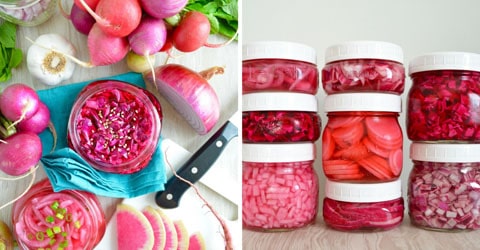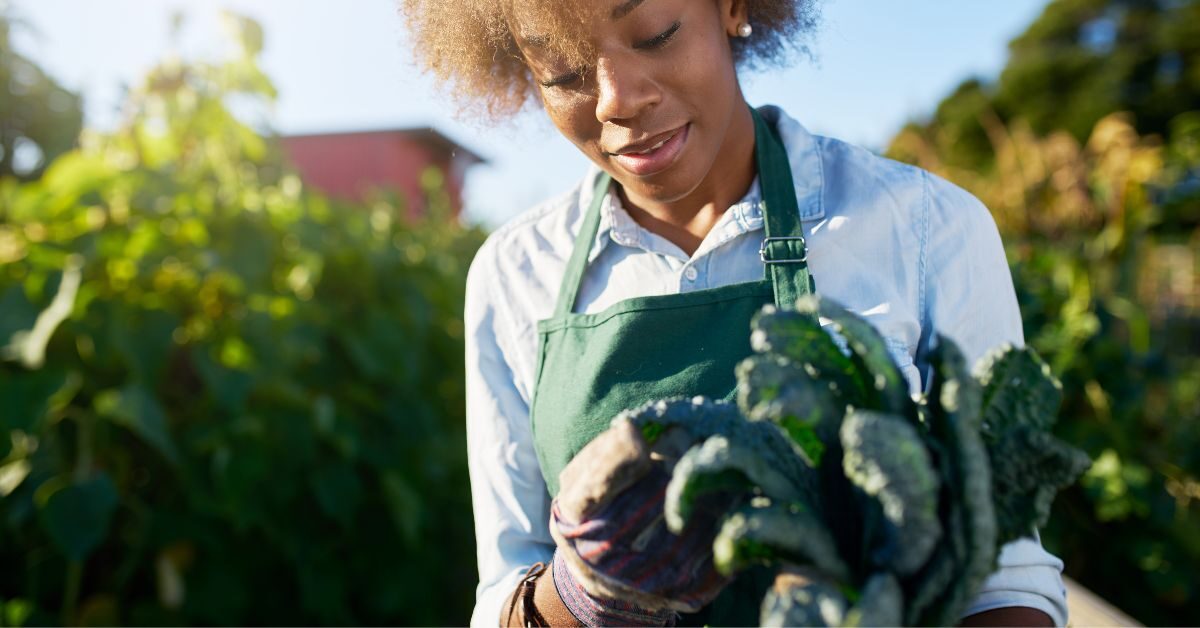
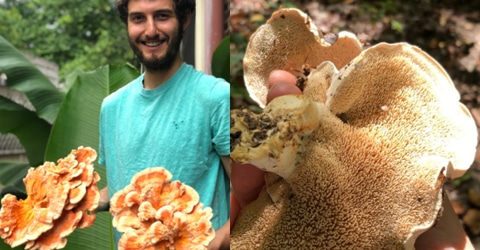
The Center for Nutrition Studies (CNS) and its authors are not foraging experts; CNS does not promote the consumption of specific wild foods in nature. This foraging series shows the abundance of food in the natural world. Please use caution when eating anything growing in nature.
As a junior in high school studying Advanced Placement Environmental Science, I had a startling realization: I knew more about the Amazon rainforest than I knew about the deciduous forest in my backyard. And I knew about endangered species in the Galápagos but knew very little about common species of animals and plants in my own neighborhood.
When birds flew over my head, I didn’t see a chickadee, a red-tailed hawk, or a turkey vulture; I just saw a “bird.” When I looked at the trees, I didn’t see hackberries, oak trees, hickory trees, and dogwoods; I just saw “trees.” While I knew some of the most common trees and birds, I knew very little about the extent of our diversity and how our local food webs interacted. I had no idea I lived in the most diverse state in the continental US for trees (180 species) and in a hotspot for salamanders, darter fish, and warblers.
Not-so-blissfully unaware of the natural beauty outside my door, I felt utterly lost — a foreigner in my own home. It was this feeling of isolation and confusion that led me to explore “nature’s garden.” How could I survive in an ecosystem if I didn’t know what I could eat and what might kill me? With the help of local naturalists, online communities, and identification guides, I began to piece together small bits of information. While I wanted to learn about wild food, I also wanted to know about local birds, fish, spiders, insects, and mammals. After a decade of walking through the woods and foraging, these bits of information began to form a vibrant tapestry of diversity and sustenance.
While some foragers fear increased competition, I see a benefit to having more foragers in my community. As interest in foraging grows, so too will our environmental awareness. I believe that foragers are more likely to preserve land and to limit their application of harmful chemicals. More foraging will allow more spaces for us to explore, enjoy, and interact with our community. It is with this mindset that I hope to encourage you to take the opportunity to connect deeper with your natural community. While foraging requires great care and understanding, I hope to act as a bridge — to connect fellow plant-based eaters to native and sustainable nutrition.
Five Reasons Why I Enjoy Foraging
1. It’s Fun
Hunting and fishing help many people connect with nature and find relaxation. Going plant-based doesn’t mean that you have to stop hunting, quite the opposite! For me, each walk through the woods is like going on a scavenger hunt where I might encounter 200 species of edible mushrooms and hundreds of species of edible shoots, leaves, seeds, flowers, and roots. Just as some people pose with photos of dead animals, I pose with my vegan bounty! Below, I share some of my favorite finds!
2. It’s Easier Than Growing Food
Growing food in Georgia requires constant attention, resources, and time. You must make sure to either buy soil or add compost so that you can replace the nonexistent layer of topsoil needed for healthy food. You must then make sure that wild animals do not take the food you worked so hard to grow. Finally, you must know when to plant, where to plant, and how to plant seeds and nurture them as they grow. While I rely on many farmers to grow the food that sustains me, I simply don’t have the land, resources, and time to grow enough food to feed myself and my community.
3. It’s Affordable and Accessible
With access to local libraries, you can borrow identification guides and learn to identify edible food right in your own backyard. Online groups allow novice foragers to post images and receive valid IDs from experienced botanists and mycologists. Local groups offer forays where you can learn about wild food and how to harvest responsibly. Wherever you live, there is a good chance that you are near somewhere with edible food. With access to technology and community, foraging can be affordable and accessible to much of the population.
4. It Fosters Connection With My Community
When I take friends and family on “hunts,” we have a wonderful time learning about our local ecosystem. We connect deeper with our surroundings and the health of the environment. My neighbors in Midtown Atlanta often beam with excitement as they show me pictures of the mushrooms growing in their yards and local parks. Some people even offer to tell me where the mushrooms are! This form of entertainment has brought me closer to my community in many ways, and it makes walking through the woods a community-building activity.
5. It’s Environmentally Friendly
Without the need to water wild plants and mushrooms, foraging is undoubtedly the most environmentally friendly form of feeding oneself. Whereas plant-based foods at the supermarket might come from questionable sources, there are ways to forage sustainably. Mushroom foraging is akin to picking fruits. The tree and the mycelium give off fruits and fruiting bodies to pass on their seeds or spores. Foraging for mushrooms can help the mushroom thrive and spread its spores. On the other hand, foraging certain parasitic mushrooms may benefit local trees as well. In “bumper years” like 2020, there is often more food than the local wildlife can eat! Harvesting from nature’s garden remains the most environmentally sustainable option for the Earth.
A Few of My Favorite Mushroom Finds

Hydnum repandum, also known as wood hedgehog mushroom or sweet tooth.
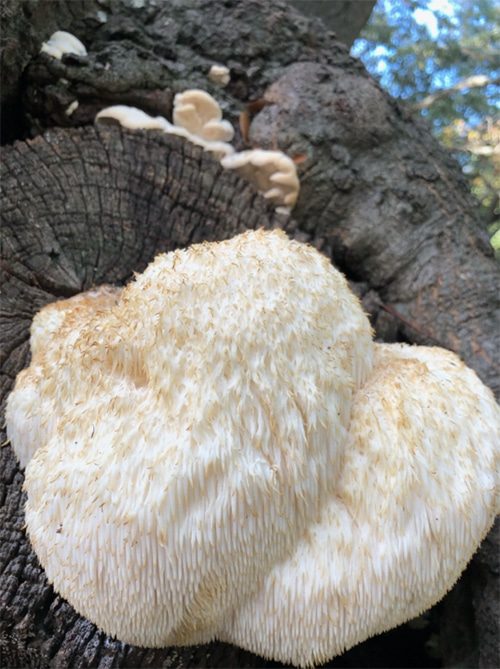
Hericium erinaceus, or lion’s-mane mushroom; the big ones are rarely easy to reach.
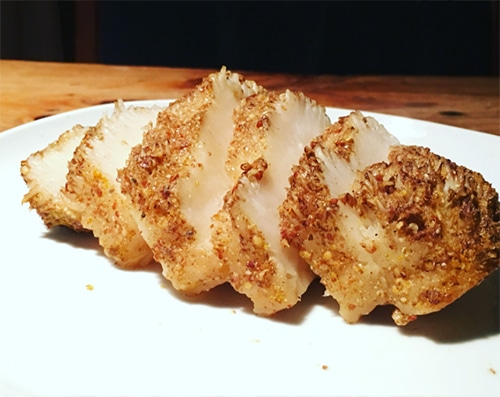
Lion’s-mane prepared in the oven covered in flaxseed and mustard
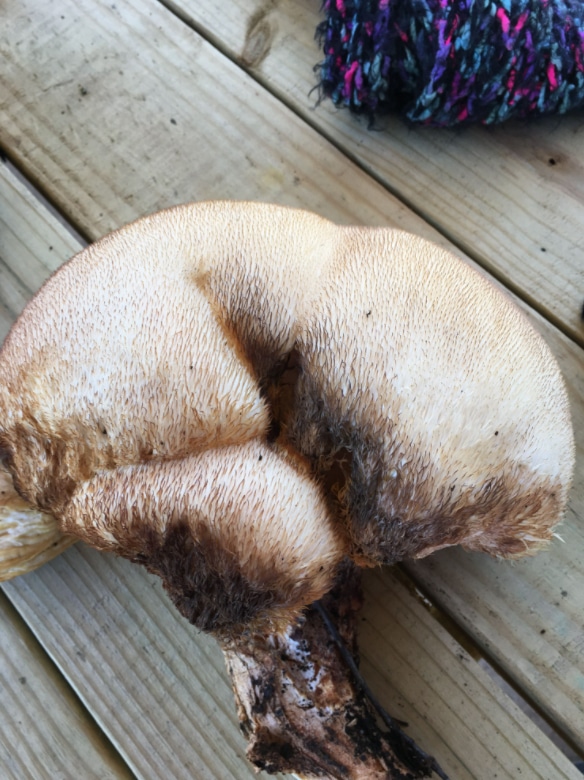
This brain-shaped mushroom (Herecium erinaceus) supposedly has brain health properties. You can search online for lion’s-mane supplements and find yourself spending hundreds if not thousands of dollars to receive the equivalent weight of this one mushroom. After removing the darker parts, I retained 20 cups of pure white mushroom!
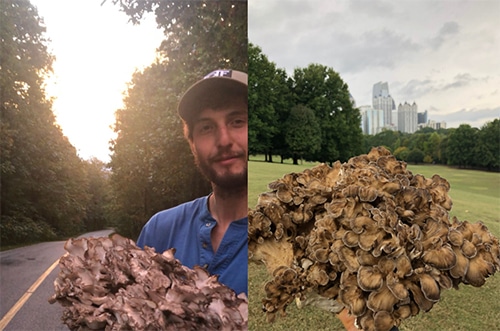
Grifola frondosa, also known as hen-of-the-woods or maitake: These two mushrooms weighed a total of 17 pounds!

Hen-of-the-woods makes a delicious vegan curried “lobster” bisque.

Laetiporus cincinnatus, also known as white-pored chicken of the woods.
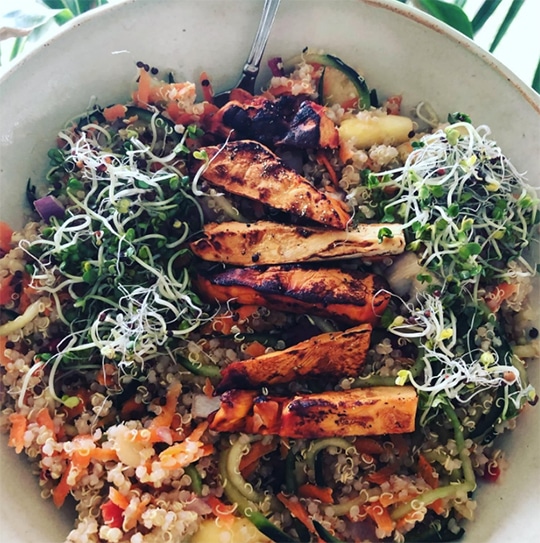
When young, these chicken of the woods taste more like salmon or scallops; when older, they taste like chicken!
Copyright 2025 Center for Nutrition Studies. All rights reserved.
Deepen Your Knowledge With Our
Plant-Based Nutrition
Certificate
Plant-Based Nutrition Certificate
- 23,000+ students
- 100% online, learn at your own pace
- No prerequisites
- Continuing education credits




